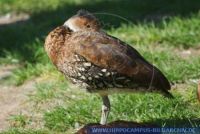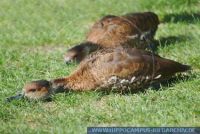Dendrocygna arborea
West Indian Whistling Duck
Exif Keywords:
Exif ImageDescription: Dendrocygna arborea, Kuba-Pfeifgans, West Indian Whistling Duck
The Black-billed Whistling Duck, Dendrocygna arborea, is a whistling duck which breeds in the West Indies. Alternative names are West Indian Whistling Duck and Cuban Whistling Duck. The Black-billed Whistling Duck is widely scattered throughout the West Indies including a large breeding population in the Bahamas, and smaller numbers in Cuba, the Cayman Islands, Antigua and Barbuda, and Jamaica. It is largely sedentary, apart from local movements which can be 100 km or more. Nests have been reported in tree cavities, on branches, in clumps of bromeliads, and on the ground under thatch palms and other dense bushes. The usual clutch size is 10-16 eggs. It habitually perches in trees, which gives rise to its specific name. The birds are mostly nocturnal and secretive, inhabiting wooded swamps and mangroves, where this duck roosts and feeds on plant food including the fruit of the Royal Palm. The Black-billed Whistling Duck is the largest (48-58 cm) and darkest of its genus. It has a long black bill, long head and longish legs. It has a pale foreneck and light brown face. The crown, back, breast and wings are dark brown to black, and the rest of the underparts are white with heavy black markings. All plumages are similar, except that juveniles are duller and have a less contrasted belly pattern.The Black-billed Whistling Duck has suffered extensive hunting for its eggs and for sport. Wetlands are a very limited habitat in the Caribbean, with continuing conversion for development and agriculture. More than 50% of remaining wetlands are seriously degraded by the cutting of mangroves and swamp-forest, pollution (especially over-use of pesticides1) and natural catastrophes such as droughts and hurricanes. Predation is inadequately documented but may be a factor.Source:Wikipedia
Viewed 6341 times




